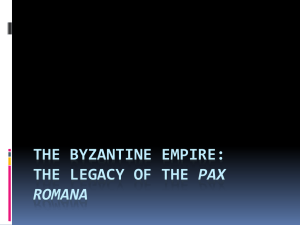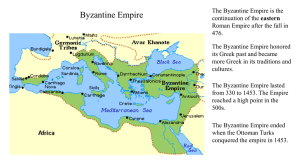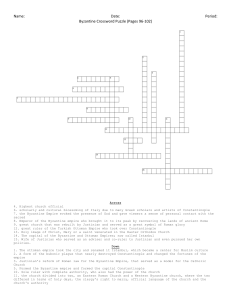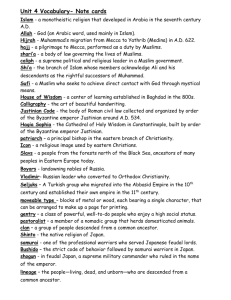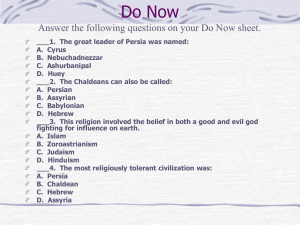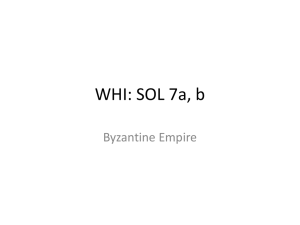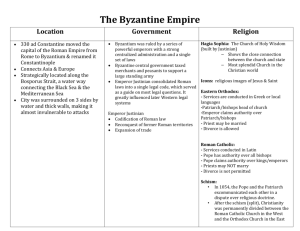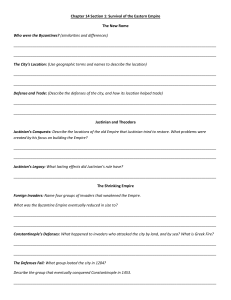Byzantine Empire Worksheet: History & Engineering
advertisement
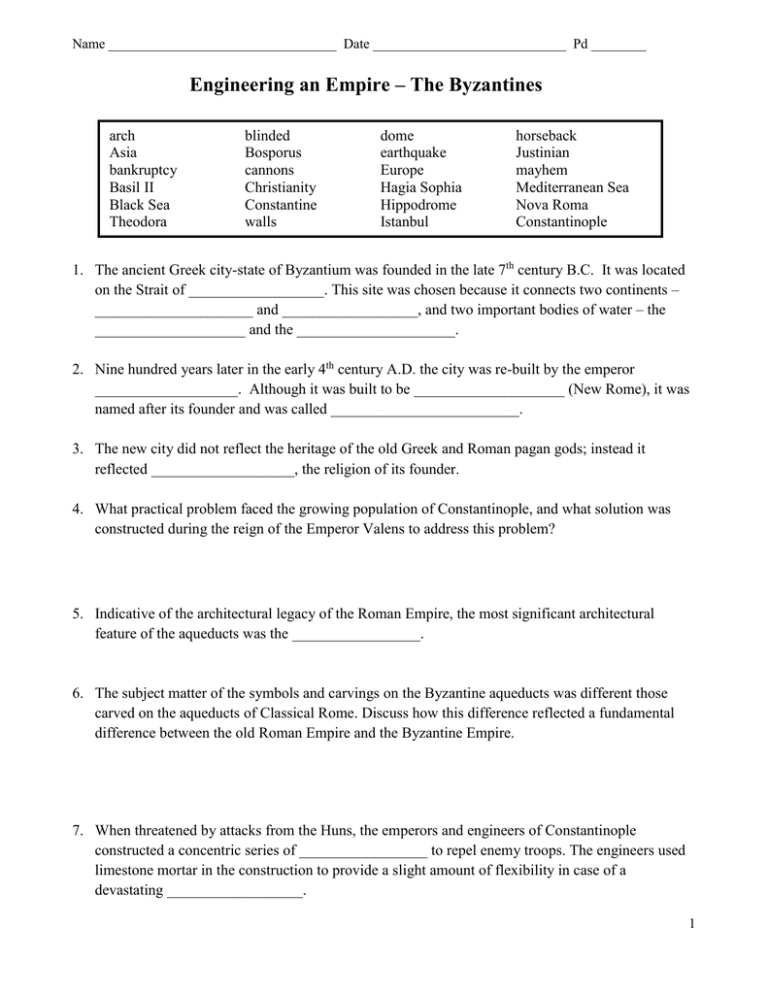
Name _________________________________ Date ____________________________ Pd ________ Engineering an Empire – The Byzantines arch Asia bankruptcy Basil II Black Sea Theodora blinded Bosporus cannons Christianity Constantine walls dome earthquake Europe Hagia Sophia Hippodrome Istanbul horseback Justinian mayhem Mediterranean Sea Nova Roma Constantinople 1. The ancient Greek city-state of Byzantium was founded in the late 7th century B.C. It was located on the Strait of __________________. This site was chosen because it connects two continents – _____________________ and __________________, and two important bodies of water – the ____________________ and the _____________________. 2. Nine hundred years later in the early 4th century A.D. the city was re-built by the emperor ___________________. Although it was built to be ____________________ (New Rome), it was named after its founder and was called _________________________. 3. The new city did not reflect the heritage of the old Greek and Roman pagan gods; instead it reflected ___________________, the religion of its founder. 4. What practical problem faced the growing population of Constantinople, and what solution was constructed during the reign of the Emperor Valens to address this problem? 5. Indicative of the architectural legacy of the Roman Empire, the most significant architectural feature of the aqueducts was the _________________. 6. The subject matter of the symbols and carvings on the Byzantine aqueducts was different those carved on the aqueducts of Classical Rome. Discuss how this difference reflected a fundamental difference between the old Roman Empire and the Byzantine Empire. 7. When threatened by attacks from the Huns, the emperors and engineers of Constantinople constructed a concentric series of _________________ to repel enemy troops. The engineers used limestone mortar in the construction to provide a slight amount of flexibility in case of a devastating __________________. 1 Name _________________________________ Date ____________________________ Pd ________ 8. Like the later Mongols (and Comanche of the western plains) the Huns were experts in fighting on _______________________. 9. After the “fall” of the Western Roman Empire in A.D. 476 the Eastern Roman Empire continued. The emperor _______________________ tried to re-create the glory of the Roman Empire. Upon taking the throne as the new emperor, Justinian named his wife _______________ to be a co-ruler. TERMINOLOGY NOT USED IN THE VIDEO – Justinian was an autocrat. This means that not only was he a monarch, but he was a monarch that ruled with complete authority over both the government and the church. 10. The high taxes and strict laws of Justinian prompted the people of Constantinople to riot after a sporting event (chariot races) at the ____________________. The supporters of the colorful teams (Reds/Greens/Whites/Blues) took the riots to the streets resulting in ___________________. (Name of that guy that falls off the roof fixing the antenna in the All State commercials). 11. Although he was going to flee for safety, Justinian listened to his wife Theodora and stayed. What was his response to the riots a week later? 12. The riots burned a large part of the city. Within a few weeks of the riots (and the massacre) Justinian started construction of the Church of Holy Wisdom, called ______________________. The dominant architectural feature of the Church is a massive _______________ that was enlarged after it first collapsed. 13. The costs of the building and military campaigns left the Byzantine Empire in ________________ that lasted for hundreds of years. IMPORTANT LEGACY of JUSTINIAN NOT DISCUSSED IN VIDEO – Justinian had his legal consultants gather and codify all Roman laws into the Code of Civil Law (CORPUS JURIS CIVILIS). This is usually referred to as Justinian’s Code. The laws formed the basis of law in Western Europe, the British Isles and the New World. The actual law books can be found in the library of every law firm in America, because the laws are still used today. 2 Name _________________________________ Date ____________________________ Pd ________ 14. The story of the Byzantine Empire jumps almost 400 years to the 10th century A. D. A strong Byzantine emperor __________________ suffered a military defeat early in his reign at the hands of the Bulgarian king. 15. After many years on the throne the emperor wanted to seek revenge on his neighboring enemy – the Bulgarians. In 1014 the Byzantine emperor defeated the Bulgarians and captured 14,000 prisoners. He ________________ all of them. Leaving every 100th man with one eye. 16. Why didn’t he just kill them? 17. The Byzantine Empire continued another 500 years. The territory of the empire decreased in size because of enemy attacks, but the city of Constantinople was protected by its walls until 1453 when the Ottomans used ________________ to bring down the wall. 18. The name of Constantinople changed to ____________________ after the Muslims took control of the city. 3
